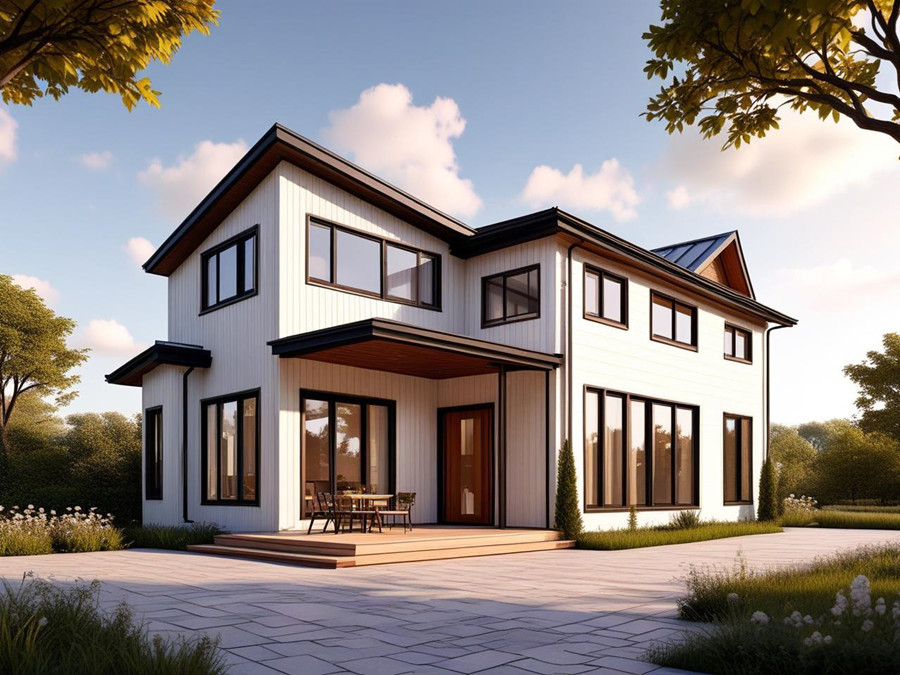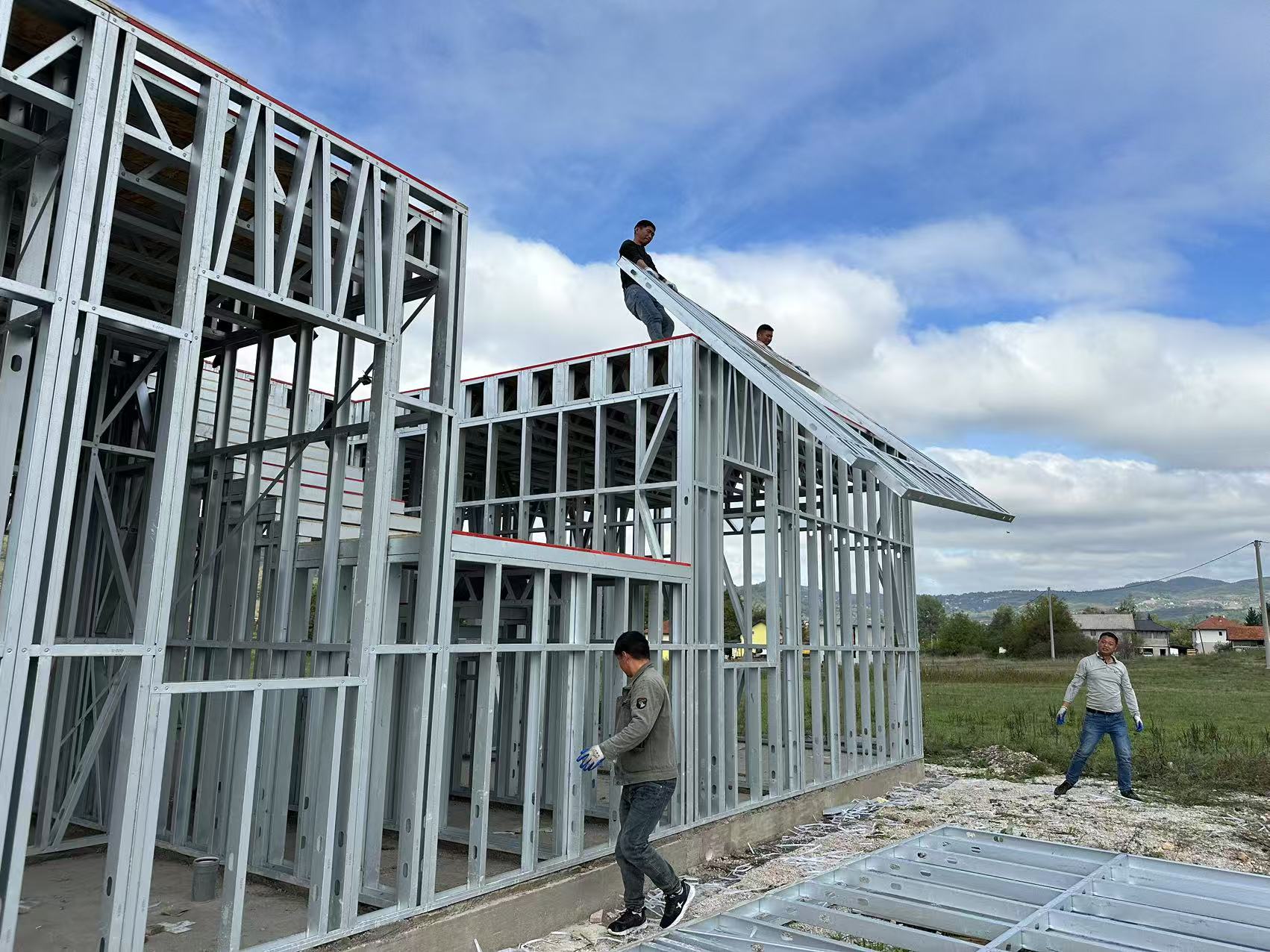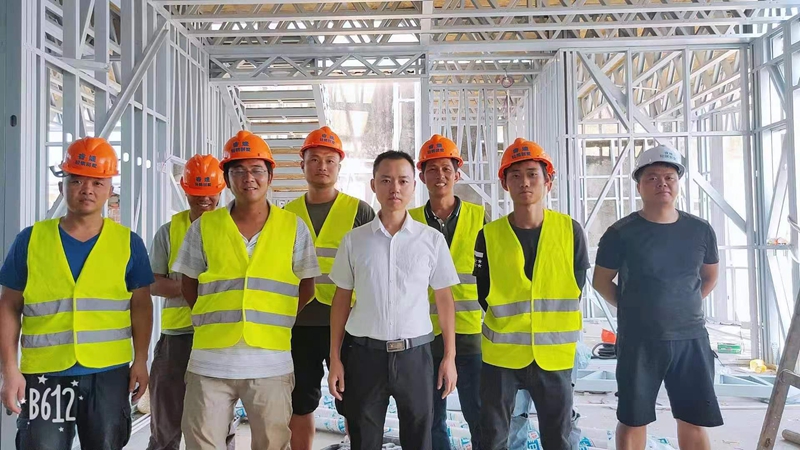As extreme weather events increase, wind resistance has become a critical factor in modern construction. Light steel and heavy steel houses are two popular choices, often compared for their ability to withstand strong winds. This article analyzes their wind resistance capabilities through structural mechanics, material science, and real-world case studies (featuring RuiJie Light Steel Homes Co., Ltd.), offering practical insights for homeowners in 2025.

Light steel villa
I. Key Factors Affecting Wind Resistance
Both light and heavy steel structures rely on four core elements for wind resistance:
Material Strength & Flexibility: Steel’s yield strength and ductility determine deformation resistance.
Structural Design: Frame connections, wall bracing, and roof angles influence wind load distribution.
Foundation & Anchoring: Secure grounding systems prevent uplift or displacement.
Exterior Cladding: Weatherproof panels reduce wind penetration and damage risks.
II. Light Steel vs. Heavy Steel: Wind Resistance Comparison
1. Material Properties
Light Steel Houses:
- Use cold-formed thin-walled steel (0.6-2mm thickness) with G550-grade galvanized coating (RuiJie’s standard).
- Pros: Lightweight (1/5 of concrete structures) reduces foundation stress; flexible design disperses wind pressure.
- Cons: Vulnerable to joint loosening under extreme winds (e.g., Category 5 hurricanes).
Heavy Steel Houses:
- Built with hot-rolled H-beams or I-beams (≥3mm thickness).
- Pros: High rigidity minimizes structural sway during gusts.
- Cons: Heavyweight increases foundation costs; welding defects may cause brittle fractures.
2. Wind-Resistant Design Innovations
Light Steel Houses:
- RuiJie’s patented technologies:
- Double-layer cross-stud walls enhance lateral force resistance.
- High-strength bolts + self-drilling screws reinforce joints.
- 15°-30° roof slopes reduce wind drag.
- Testing: Withstands 14-level typhoons (41.5 m/s) without structural damage.
Heavy Steel Houses:
- Welded frames with diagonal bracing improve rigidity.
- Requires additional shear walls or concrete cores for hurricane zones.
- Limits: Theoretical wind resistance up to 55 m/s, but stress concentration risks from poor welding.
3. Regional Adaptability
Coastal Typhoon Zones:
- Light steel excels in frequent typhoon areas (e.g., RuiJie’s projects in Hainan survived 15-level gusts during 2024’s Typhoon "Mangkhut").
- Heavy steel suits hurricane-prone regions (e.g., Florida, USA) with deep-pile foundations.

Light steel villa keel
Inland High-Wind Areas:
- Light steel costs 30%-40% less when reinforced with X-braces.
- Heavy steel performs better in tornado corridors due to its mass.
III. RuiJie Light Steel Homes: Wind Resistance Breakthroughs
As an industry leader, RuiJie integrates cutting-edge technologies:
AI Wind Simulation: Predicts structural deformation under dynamic wind loads.
Modular Reinforcement Kits: Detachable steel wind shields deploy during storms.
Certification: Complies with ISO 15952 wind-resistance standards, backed by a 10-year structural warranty.

Ruijie Light Steel Villa Team
IV. Cost & Maintenance: Long-Term Value
Construction Costs:
- Light steel: $110-$205 per sqm (RuiJie’s all-inclusive packages).
- Heavy steel: $165-$275 per sqm (higher labor and foundation expenses).
Upkeep:
- Light steel: 50-year galvanized coating; minimal joint inspections.
- Heavy steel: Requires weld corrosion checks every 5 years.
Insurance: Light steel policies cost 15%-20% less due to transparent wind-test data.
V. 2025 Buyer’s Guide: Balancing Safety & Budget
Match Needs to Climate:
- Choose light steel for typhoon zones (e.g., RuiJie’s "TyphoonGuard" series).
- Opt for heavy steel-concrete hybrids in extreme wind regions.
Verify Credentials:
- Review wind-test reports (e.g., RuiJie’s public typhoon simulation videos).
- Study completed projects’ performance in storms.
Design Smart:
- Streamline roofs and avoid protrusions.
- Reinforce windows and doors against wind pressure.
VI. Future Trends: Next-Gen Wind Resistance
Smart Materials: Shape-memory alloys (SMA) auto-strengthen joints during storms.
IoT Monitoring: Real-time sensors track structural stress and wind loads.
Eco-Innovations: RuiJie’s "Solar-Wind Hybrid Roof" merges energy efficiency with storm protection.
Conclusion
Light steel houses offer cost-effective flexibility for most wind scenarios, while heavy steel suits extreme conditions at a premium. RuiJie Light Steel Homes leads the market with certified, tech-driven solutions. By 2025, advancements in materials and AI will further elevate light steel’s wind resistance, reshaping safe and sustainable housing.